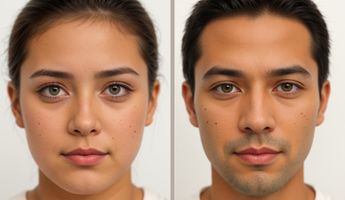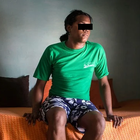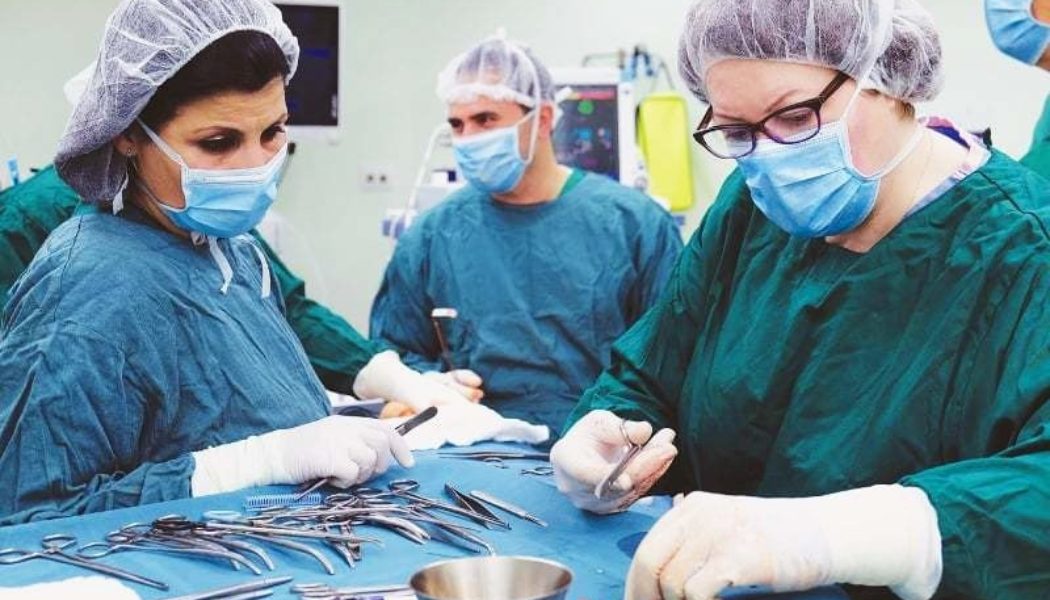Sex Reassignment Surgery (Female To Male) in Panama
Search and Compare the Best Clinics and Doctors at the Lowest Prices for Sex Reassignment Surgery (Female To Male) in Panama

Find the best clinics for Sex Reassignment Surgery (Female To Male) in Panama
No clinics available
Thailand offers the best prices Worldwide
Price: $ 556

- Home
- Panama
Compare Before & After Photos of _procedure_photos.phpSex Reassignment Surgery (Female To Male)


Half-side view


Front view


Half-side view


Front view


Front view


Front view


Front view


Front view
WHY US?
At Medijump, we're making medical easy. You can search, compare, discuss, and book your medical all in one place. We open the door to the best medical providers worldwide, saving you time and energy along the way, and it's all for FREE, no hidden fees, and no price markups guaranteed. So what are you waiting for?

Free

Best Price

Widest Selection

Risk-Free
What you need to know about Sex Reassignment Surgery (Female To Male) in Panama

Some people are born male and some are born female. While there are some people who are transgender, whose gender identity does not match their assigned sex. Sex change surgery, also known as gender reassignment surgery (GRS) or sex reassignment surgery (SRS) is there to help these people. This is a surgical procedure that changes the sex of a person. It changes a transgender person’s physical appearance according to there identified gender. It treats gender dysphoria in these people. This includes both feminization and masculinization surgeries. In masculinization surgery, there are two domains:
- Top surgery
- Bottom surgery.
In top surgery, mastectomy is performed to remove the breasts and give your chest a more male-like contour. Bottom surgery involves increasing the length of the clitoris which is called metoidioplasty, production of a penis, and scrotum which are known as phalloplasty and scrotoplasty respectively, and removal of the uterus that is a hysterectomy. This surgery is not for everyone. A number of things are considered before opting for surgery. However, normal people with assigned gender can also go for this if they want to.
Before the operation, your assigned sex does not correspond to your gender identity. You suffer from gender dysphoria. You feel uncomfortable in your skin. However; after the surgery, you are a person of your desired sex. You are converted from a female to a male.
What is the cost of Sex Reassignment Surgery (Female To Male) in Panama?
Like any intricate healthcare process, the price for undergoing Sex Reassignment Surgery (Female To Male) is not a fixed figure in Panama. The final tally significantly sways due to issues like the patient's comprehensive health status, distinct surgical necessities, and the operating surgeon's level of proficiency. It's vital, too, to factor in the cost of post-procedure care, prescribed medicines, and extra treatments, all of which substantially contribute to the total expenditure.
Moreover, distinct clinics situated in Panama might provide an array of payment structures or offer financial aid alternatives. It's advisable to undertake thorough investigations or reach out to prospective clinics directly to obtain a precise cost prediction.
What does a Sex Reassignment Surgery (Female To Male) Procedure Involve?
Anesthesia is given to ensure that the patient does not suffer from pain during the surgery. Top and bottom surgeries are performed differently.
-
Mastectomy: It is performed in two ways. In one method, an incision is given around the areola and excessive fat and breast tissue are removed through it. The skin is left as it is for a year. It retracts in this period of time. This method leaves prominent scars. In the other method, excess skin is also removed along with the tissue and fat. This leaves fewer scars. After this, male-like the contour of the chest is obtained.
In the other step, female reproductive organs that are present inside your body are removed.
-
Hysterectomy: Total Hysterectomy is the removal of uterus and cervix. Another surgery, bilateral salpingo-oophorectomy (BSO) is performed to remove fallopian tubes. In this way, the entire female reproductive system is eliminated from the body.
After this, procedures for the construction of male reproductive organs begin. They include,
- Metoidioplasty: Androgenic hormones are given to increase the length of the clitoris. Length is increased to almost 1.6 to 2 inches.
- Phalloplasty: It is performed to create a penis or to increase the length of it. It can be done in 4 ways. All of these work on the same principle. A flap of skin is taken from a donor site of the body such as an arm or abdomen to make a penis out if it. It is joined to the urethra. This is the most complicated step of GRS. An erectile prosthesis is inserted into the penis to achieve an erection.
- Scrotoplasty: Scrotum is produced from labia majora and prosthetic testes are inserted into it.
How Long Should I Stay in Panama for a Sex Reassignment Surgery (Female To Male) Procedure?
It is a long procedure involving a number of surgeries. There is top surgery and bottom surgery. Mastectomy takes 2 to 3 hours in the operation theatre. While bottom surgery requires more time. It takes 8 to 10 hours for a female to male GRS. You should plan to stay in the area for at least 14 days after your Procedure, During this duration, your health conditions are monitored regularly and your stitches are removed after 10 to 14 days. You can go home when allowed to by your physician.
What's the Recovery Time for Sex Reassignment Surgery (Female To Male) Procedures in Panama?
You will have to take 2 weeks off work. After 2 weeks, you can start a light activity and can go back to office work. A Patient will need more time to get back to physical work. You can start strenuous activity 4 to 6 weeks after bottom surgery. Pain killers are given in this period to deal with moderate pain. Scars take some time to fade away. It can take years after the surgery to settle both physically and psychologically.
What sort of Aftercare is Required for Sex Reassignment Surgery (Female To Male) Procedures in Panama?
Following points should be considered to look after you post-surgery:
- Go for regular check-ups.
- Take your medicines as and when prescribed by the doctor.
- Live with someone who takes care of you while you recover.
- Abstain from sexual activity till allowed by your doctor.
- Do not take a bath or shower with bandages intact. It can cause infection.
- Avoid strenuous exercise in the early few days after surgery.
- Do not lift heavy objects; it puts pressure on your stitches.
- Avoid excessive movement. Take a rest.
What's the Success Rate of Sex Reassignment Surgery (Female To Male) Procedures in Panama?
The success rate of Sex Reassignment Surgery (Female To Male) within Panama depends on a spectrum of elements. Such factors encompass the proficiency and prior expertise of the surgical unit, the comprehensive health condition of the person, their mental readiness, and compliance with the suggested after-treatment attention. An abundance of research has pointed out that a majority of individuals who choose Sex Reassignment Surgery (Female To Male) acknowledge a marked enhancement in their lifestyle quality, elevated mental health, and a noteworthy contentment level with the physical transformations.
According to a study, 97% of the people who went through this surgery found their results satisfactory. You need to be sure before opting for it, as it is a lifetime decision. GRS is mainly for the treatment of dysphoric and transgender people.
Are there Alternatives to Sex Reassignment Surgery (Female To Male) Procedures in Panama?
The following are some alternatives to sex reassignment surgery:
- Hormone replacement therapy: this therapy aids in changing your secondary sex characteristics according to your desired sex. In the case of female to male sex change, testosterone is given. This induces hair growth and coarseness of voice. It reduces breast growth and changes in fat distribution in your body. It also stops menstruation.
- Altering physical appearance: you can alter your physical appearance, your dressing, your hair, your makeup in accordance with your desired sex. Do regular exercises to build up muscle mass which will make you look like a male.
- Psychological counseling: it will make you handle your personality. Gender reassignment surgery cannot be reversed. Therefore, you should make your decision wisely.
- Cosmetic surgery: it is a wide field covering a number of domains. It can alter your facial features, your body fat, your waist, your stomach, your chest to transform you into your desired gender. You can go for liposuction, mastectomy, Botox, fillers, Rhinoplasty, etc.
All of the methods, mentioned above are not permanent but are helpful. For permanent change, you have to go for sex reassignment surgery.
What Should You Expect Before and After the Procedure
Prior to initiating the Sex Reassignment Surgery (Female To Male), it is necessary to ensure each individual undergoes thorough psychological analysis and counseling. These checks serve to affirm the patient's emotional readiness and ability to cope with the aftermath of the procedure. In addition to mental health evaluations, multiple medical assessments are implemented to inspect their overall health state. Recognizing any pre-existing health issues is of utmost importance as they can potentially impact the result of the surgery. Regularly scheduled consultations with knowledgeable healthcare professionals are fundamental to this process. These meetings will entail in-depth explanations and discussions to help formulate a holistic understanding of the entire procedure and its ensuing effects.
After the execution of the surgical procedure, there's a need for mental readiness for an extensive recovery period. This stage typically demands diligent post-procedure care and major lifestyle adjustments. Surgical recovery isn't typically a swift process - it's a path that entails physical changes and lifestyle adaptations, necessitating a period of adjustment for the patient. The adoption of healthy habits becomes particularly important during this period. Activities like regular physical activity, adhering to a nutritious diet, and incorporating stress-relief practices are proven to carry several benefits. Moreover, in addition to the emphasis on physical recuperation, mental health should also be prioritized equally.
What are Potential Risks of Sex Reassignment Surgery (Female To Male)?
Each surgical procedure comes with inherent risks and potential complications, including Sex Reassignment Surgery (Female To Male). These might encompass general surgical risks such as infection, bleeding, or adverse reactions to anesthetic drugs. Specific to Sex Reassignment Surgery (Female To Male), there may also be healing-related risks, which could result in necrosis or lackluster cosmetic outcomes. Educating oneself about the possible complications of surgical procedures is beneficial for better preparation.
Additionally, extended exposure to hormonal treatment might escalate the risk of cardiovascular ailments or osteoporosis. There could also be mental health concerns such as depression or anxiety, which may spring from society's responses or personal adaptation to a new identity. Frequent consultations with a healthcare professional are essential to keep track of and mitigate any possible risks or complications.
Whilst the information presented here has been accurately sourced and verified by a medical professional for its accuracy, it is still advised to consult with your doctor before pursuing a medical treatment at one of the listed medical providers
No Time?
Tell us what you're looking for and we'll reachout to the top clinics all at once
Enquire Now

Popular Procedures in Panama
Prices Start From $497

Prices Start From $1,552

Prices Start From $500

Prices Start From $1,000

Recommended Medical Centers in Panama for procedures similar to Sex Reassignment Surgery (Female To Male)

- Interpreter services
- Translation service
- Religious facilities
- Medical records transfer
- Medical travel insurance
- Health insurance coordination
- TV in the room
- Safe in the room
- Phone in the room
- Private rooms for patients available
Sex Reassignment Surgery (Female To Male) in and around Panama
Introduction
Situated as a transcontinental entity, the Republic of Panama straddles the geographic crossroads of Central and South America. The inception of the Panama Canal in 1914 propelled this country into an integral position as a nexus between the Caribbean Sea and the Pacific Ocean. Those who are drawn to visit this radiant country find themselves ensnared in a mesmerizing display of cerulean seas, diverse fauna, deserted islands, bountiful coffee farms, and awe-inspiring rainforests.
The Republic of Panama unites the corners of the world, bridging the two American continents as a vibrant transcontinental nation. The construction of the Panama Canal in 1914 marked a turning point, positioning the nation as a crucial crossroad - connecting the vast expanse of Caribbean waters with the Pacific. The travelers who venture into this country discover an array of rewards awaiting them. The breathtaking beauty of sparkling blue waters, a plethora of enthralling wildlife, desolate islands that evoke an air of tranquility, sprawling coffee plantations, and the awe-striking charm of lush rainforests contribute to the diverse and enticing experiences that Panama has to offer.
Over the past several years, the Republic of Panama is steadily gaining renown as a preferred medical tourism hotspot for myriad individuals across Europe and the United States. The medical professionals operating within the country receive their robust education and accreditation from the United States, thus ensuring their expertise extends to the vanguard of their respective fields. The blend of these proficient doctors and superb medical infrastructure, combined with reasonable pricing on a wide range of medical practices, contributes to Panama's appeal for healthcare needs. Whether one seeks remedial treatments or desires elective cosmetic surgery, there are an ample array of high-quality, cost-effective services available in this picturesque country.
In the recent panorama, Panama has noticed a swift surge in its recognition as a prime choice for medical tourism, attracting numerous Europeans and Americans to its shores. Professionally trained and certified in the United States, the doctors in Panama stand at the forefront of their respective medical fields. Contributing to its desirability as a medical tourism hub is the high-quality care provided by these adept medical practitioners, alongside state-of-the-art healthcare facilities. The affordability of medical procedures in Panama further heightens its appeal. From treatments aimed at correcting medical conditions to elective cosmetic surgeries, the striking beauty of Panama, coupled with its comprehensive and affordable healthcare solutions, makes it an ideal medical destination for individuals worldwide.
Popular Cities and Regions in Panama
Known as the most cosmopolitan capital within the region of Central America, Panama City opens the door to a multitude of tropical getaways while donning the hat of a bustling metropolis. Serving as a focal point for trade and immigration within the region, Panama City represents a vibrant blend of diverse cultures; a veritable melting pot where different backgrounds meet and meld.
Being the epitome of cosmopolitan magnificence in Central America, Panama City beams as the gateway to a spectrum of tropical retreats and simultaneously thrives as a bustling urban settlement. It stands as a central hotspot for regional trade and immigration practices, thereby birthing a profusion of cultures. This city, with its diverse cultural influences, serves as a sophisticated melting pot, crafting a harmonious blend of a myriad of cultures.
Some of the more popular tourist attractions are Teatro Nacional, Panamá Viejo, Donde José, and Parque Natural Metropolitano. Although the capital attracts thousands of tourists each year, the most popular destination is Bocas del Toro. Combining a laid-back Caribbean vibe with the incredible natural setting of forests, jungles, and mangrove, this seaside town is where adventure and relaxation meet. Surfing and snorkeling are extremely popular in this town. However, the real talking point is relaxing in a secluded cove which can only be reached by water taxis.
Transport in Panama
The primary international portal into Panama is the Tocumen International Airport, serving as a critical regional hub for flights moving in and out of The Caribbean, as well as North, South, and Central America. Additionally, it accommodates flights from select cities across Asia and Europe. For intra-country travel, domestic flights are the quickest mode of transport; however, the speed comes with a higher price tag.
Road travel presents a more economical alternative, with buses being the most widely used and cost-effective means of transportation across the country. Within the confines of major cities, taxis are readily available for residents and tourists alike.
Tocumen International Airport is the premier international aerial gateway into Panama. This airport stands as a regional transport hub, connecting Panama with destinations across the Caribbean, North, South, and Central America — even heralding flights from certain European and Asian cities. To journey within Panama, domestic flights offer the quickest, albeit pricier, option. For those prioritizing affordability over speed, buses provide a popular and budget-friendly choice.
Further adding to the transportation options in Panama is the accessibility of taxi services. For those traversing within the major urban areas of the country, taxi services make intra-city travel a breeze. These easily available taxis contribute significantly to the efficiency of short distance commutes.
Additionally, getting around within the key city areas in this country is seamless thanks to the taxi services. For intra-city commutes in Panama's principal urban centers, taxis stand as a thoroughly accessible choice for transportation, simplifying movement within the cityscape.
Visas in Panama
Panama allows citizens of most countries, including all EU citizens and Americans, to visit the country without a visa for 180 days. Some other countries, such as China and the Philippines, need a visa to visit the country. All visitors need to hold a passport valid for at least 6 months.
-
Citizens of over 100 countries, including all EU nations and the United States, can visit Panama without a visa for up to 180 days.
-
Nationals of countries not included in the visa-exemption list need to apply for a visa before traveling to Panama.
-
All visitors must have a valid passport with at least six months remaining validity from the date of entry.
-
Proof of onward travel may be requested upon arrival.
Weather in Panama
Situated comfortably within the tropics, Panama's climate is characterized by distinctive wet and dry seasonal variations. Spanning from mid-March through to December, the wet season tends to bring rainfall every alternate day. However, the showers are typically brief and they mainly occur during afternoon hours, but this season also tends to be quite humid. On the other hand, the dry season extends from December until March. Throughout this time frame, the likelihood of witnessing rainfall dramatically decreases, resulting in overall drier conditions.
Given its tropical location, Panama experiences two distinct seasons: the wet and the dry. Commencing in mid-March and continuing until December, the wet season brings periodic rainfall, which typically occurs in short, intense bursts during the afternoon. However, tourists should remember that humidity levels can peak during this time. Conversely, the dry season, which stretches from December through March, ushers in a period of minimal rainfall, offering a drier climate.
Additional Info
- Local Currency: The official currency is the balboa. The rate of exchange has always been tied to the US dollar. 1 USD equals 1 PAB.
- Money & Payments: ATMs are readily available in most cities and towns. Credit cards are accepted at upscale hotels and restaurants. Tipping is customary.
- Local Language: Spanish is the official language of Panama, as well as the most widely spoken. English is one of the most popular foreign languages.
- Local Culture and Religion: The main religion in Panama is Christianity. However, Buddhism, Judaism, and other religions are also practiced.
- Public Holidays: Panama celebrates Mardi Gras, Los Santos Uprising Day, Independence Day, and Christmas Day among others.
Popular Searches
- Plastic Surgery in Thailand
- Dental Implants in Thailand
- Hair Transplant in Thailand
- Breast Augmentation Thailand
- Gastric Sleeve in Thailand
- Gender Reassignment Surgery in Thailand
- Laser Hair Removal in Bangkok
- Botox in Bangkok
- Dermatology in Bangkok
- Breast Augmentation in Bangkok
- Coolsculpting in Bangkok
- Veneers in Turkey
- Hair Transplant in Turkey
- Rhinoplasty in Turkey
- Stem Cell Therapy in Mexico
- Rhinoplasty in Mexico
- Liposuction in Mexico
- Coolsculpting in Tijuana
- Rhinoplasty in Korea
- Scar Removal in Korea
- Gastric Sleeve in Turkey
- Bone Marrow Transplant in India
- Invisalign in Malaysia
- Plastic Surgery in the Dominican Republic
- Tummy Tuck in the Dominican Republic
- Plastic and Cosmetic Surgery in Poland
- Rhinoplasty in Poland
- Hair Implant in Poland
- Dental Implants in Poland
- IVF in Turkey